
Chaetocercus is a genus of hummingbirds in the family Trochilidae.
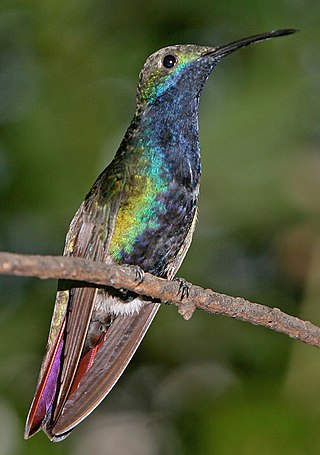
The mangos, Anthracothorax, are a genus of hummingbirds in the subfamily Trochilinae native to the Neotropics.

Chalcostigma is a genus of South American hummingbirds in the family Trochilidae.
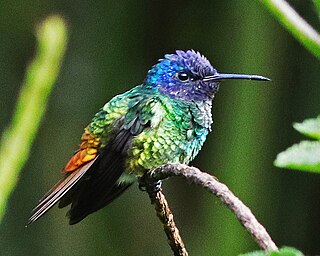
Chrysuronia is a genus of hummingbirds in the family Trochilidae, all of which are native to Central and South America.
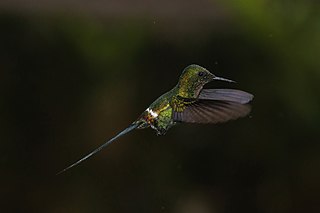
Discosura is a genus of South and Central American hummingbirds in the family Trochilidae. The thorntails are sometimes placed in the genus Popelairia, leaving Discosura for the racket-tailed coquette. On the contrary, some have argued for merging this genus into Lophornis, which they overall resemble, except for the highly modified tail-feathers of the males.

The caribs are a genus, Eulampis, of hummingbirds in the family Trochilidae. The genus contains two species, both of which are endemic to the islands of the Caribbean. The genus name comes from the Ancient Greek word eulampēs meaning 'bright shining'.

Eupetomena is a genus in the hummingbird family Trochilidae. It contains two species which are both found in eastern South America.
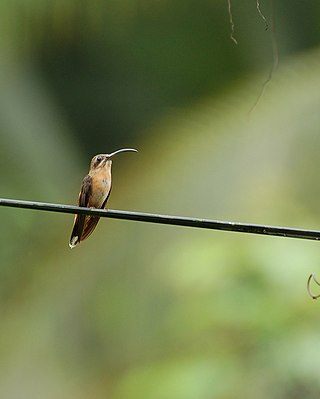
Glaucis is a genus of hummingbird in the family Trochilidae.

Heliodoxa is a genus of hummingbirds in the family Trochilidae.
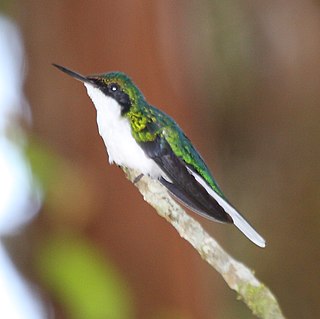
Heliothryx is a genus of hummingbird in the family Trochilidae. The genus is assigned to the subfamily Polytminae which is sometimes referred to by the informal name "mangoes".

Hylocharis is a genus of hummingbirds, in the family Trochilidae. It contains two species that are both found in South America.
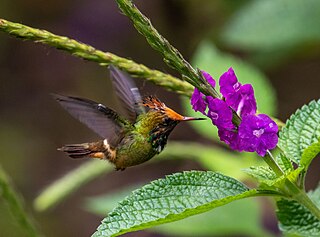
Lophornis is a genus of hummingbird in the family Trochilidae. These are all tiny birds, ranking among the smallest hummingbirds. No species exceeds 9 cm (3.5 in) and most are under 7.5 cm (3.0 in) in total length, weighing 3 grams or less. The male coquettes are noted from their outlandish, colorful crests and markings, the females being more subdued.
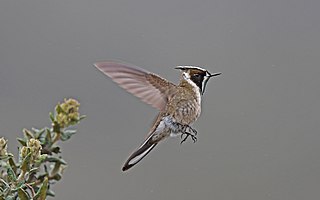
The bearded helmetcrests (Oxypogon) are a genus of hummingbird in the family Trochilidae. They are found in Colombia and Venezuela. Primary natural habitat is subtropical or tropical high-altitude grassland, known as páramo. The genus contains four species.

Woodnymphs are hummingbirds in the genus Thalurania. Males are green and violet-blue, while females are green with white-tipped tails and at least partially whitish underparts. Both sexes have an almost straight, entirely black bill and little or no white post-ocular spot. They are found in forest and tall second growth. The species in this genus are almost entirely allo- or parapatric, and a species is present virtually everywhere in the tropical humid Neotropics.
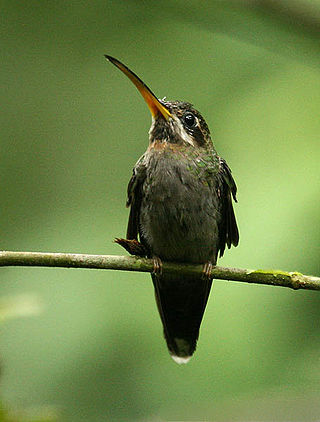
The barbthroats are a genus Threnetes of South American hummingbirds in the family Trochilidae.

The crimson topaz is a species of hummingbird in the family Trochilidae. It is found in Brazil, French Guiana, Guyana, Suriname, and Venezuela.

The topazes are two species of hummingbirds in the genus Topaza. They are found in humid forests in the Amazon Basin. Males are by far the largest hummingbirds in their range – the giant hummingbird of the Andes is the only larger species in the family. Males have a total length of about 22 cm, although this includes their elongated rectrices. They are colourful, being mainly strongly iridescent golden and crimson with a black hood and a green throat. Females lack the elongated rectrices and have a mainly green plumage.

The streamertails are hummingbirds in the genus Trochilus, that are endemic to Jamaica. It is the type genus of the family Trochilidae. Today most authorities consider the two taxa in this genus as separate species, but some continue to treat them as conspecific, in which case scitulus is a subspecies of T. polytmus. A wide range of common names apply to this combined species, including green-and-black streamertail, Jamaican streamertail or simply streamertail. The name streamertail is a reference to the greatly elongated rectrices of the males.
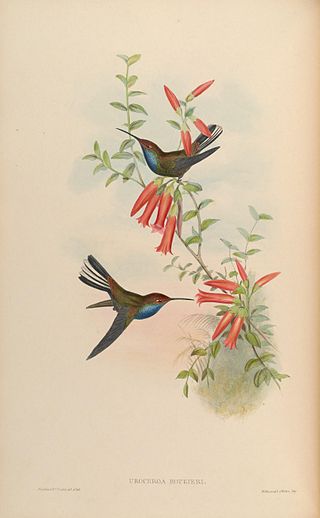
Urochroa is a genus of hummingbird containing two recently-split species.
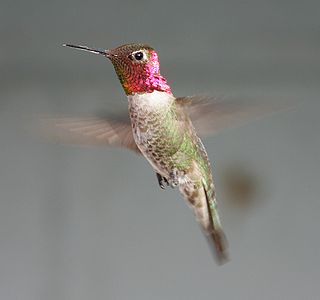
Calypte is a genus of hummingbirds. It consists of two species found in western North America.




















